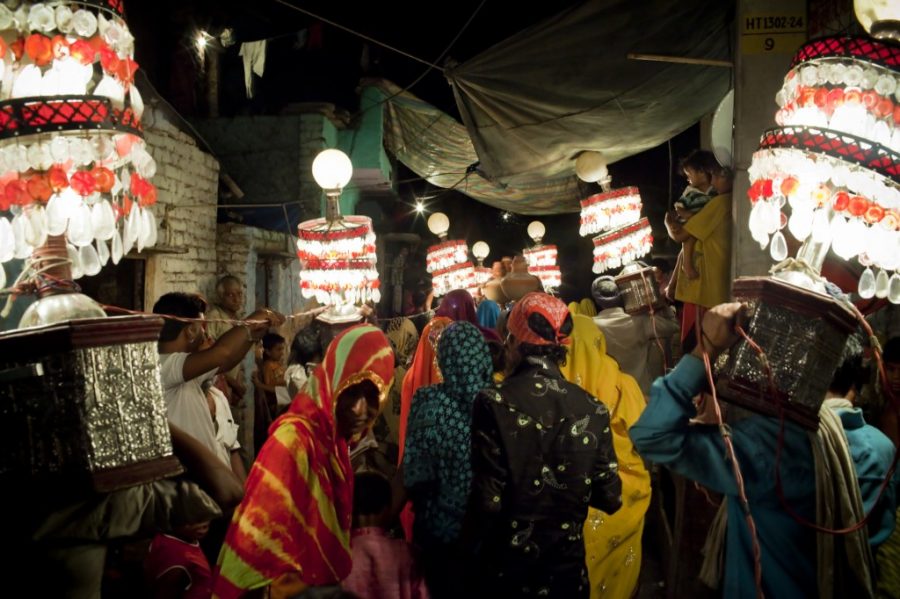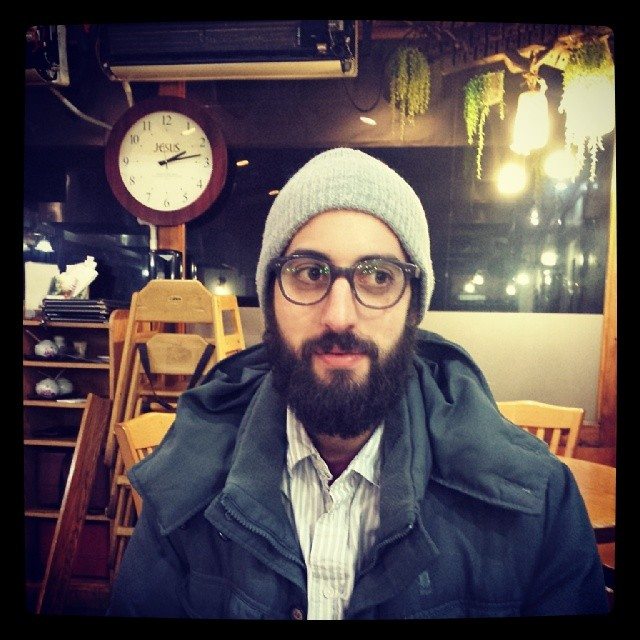
 In “Tomorrow We Disappear” (read our review here), the Brooklyn-based team of Adam M. Weber and Jim Goldblum travel all the way to India to introduce us to the Kathputli colony, a suburb outside of Delhi populated by magicians, acrobats and street artists. The families in the colony are threatened by the imminent construction of a commercial complex, which would require them to leave behind the homes they’ve inhabited for over six decades. Vibrantly shot and edited, the film focuses on the David vs. Goliath conflict between the artists and the government, but beyond that gives us a glimpse into a world where magic and wonder are truly the norm.
In “Tomorrow We Disappear” (read our review here), the Brooklyn-based team of Adam M. Weber and Jim Goldblum travel all the way to India to introduce us to the Kathputli colony, a suburb outside of Delhi populated by magicians, acrobats and street artists. The families in the colony are threatened by the imminent construction of a commercial complex, which would require them to leave behind the homes they’ve inhabited for over six decades. Vibrantly shot and edited, the film focuses on the David vs. Goliath conflict between the artists and the government, but beyond that gives us a glimpse into a world where magic and wonder are truly the norm.
Making its debut at the Tribeca Film Festival, where it’s competing in the World Documentary category, “Tomorrow We Disappear” is an apt reminder of the power arts can have in changing the world. We sat down with directors Weber and Goldblum, as well as puppeteer Puran Bhatt, who discussed their political intentions and how Salman Rushdie and Japanime were major influences in their work.
StageBuddy: How did you learn about the story of the Kathputli Colony and decided to turn it into a film?
Adam M. Weber: I’m not sure if you’re familiar with “Midnight’s Children” by Salman Rushdie, which has always been my favorite book, so years ago I recommended it to Jimmy who read it and when he got to the end of the book the main character goes and hides in a magicians ghetto and he just plugged that into Google search and found this place. He sent me a very impassioned email, and we’d been looking to work on something together for a while and within two months we’d packed our bags and went without having any expectations. Once there, I knew we had a film within a few weeks, because it was a very universal story.
Jim Goldblum: Rushdie calls it the ghetto of magicians, he never called it Kathputli, so we didn’t know for sure if it even was the same place until a few weeks ago he started posting about our movie on Facebook. He saw the film and sent us really lovely messages. It was a nice circle all the way to Tribeca.
SB: Did arriving to this place with cameras disrupt the normal lives of these people?
AW: That was not an issue at all. Everybody was very comfortable. If the story had been about them performing we would’ve shot the film in two weeks, but since the story was about them dealing with an identity crisis - do they see themselves as artists or poor people - sometimes that take years to capture. I don’t think we knew what the heart of the story would be until the circumstances presented themselves.
SB: How did you choose the people you wanted to focus on within the colony?

JG: The first part was just casting, we filmed with about 15 to 20 different artists, like Puran for example, who has a gravitational pull to him. We tried to get a magician who had been in “Penn and Teller” but as we were filming him we saw his son in the background and there was something about him, you could tell he was proud of his father’s traditions but you could also see a struggle, and we turned the camera that way instead. You have to remain open I guess.
AW: Puran is an amazing puppeteer, he’s a very accomplished guy who has received national prizes, Rahman who is a street magician and has a very different experience from Puran. So we wanted a variety of voices to represent the colony.
SB: Speaking of different voices, Maya, the acrobat, for example has a fascinating story that we don’t get to explore further, and I think that with many characters in the film we have these cases where we wish the film would focus more on them. I’m sure you have many unused footage, are you interested in revisiting these characters in another film?
AW: Even after we finished the movie we went back and shot more, we’re always collecting footage and we’re connected to this amazing Facebook community that sends us footage of the colony. We shot 450 hour of footage and we’re always looking for different outlets. Maya’s tale is epic and she’s a superhero, I’m sure we could have a whole movie about her.
SB: Performing in front of an audience is different than watching a recorded performance, yet Puran’s work flows so beautifully on camera, that I wondered if you were a big film buff growing up?
Puran Bhatt: Definitely, I’ve loved movie since I was a child. I would fight my parents to go watch movies, movies are a part of me.
SB: At the end of the film, you invite us to visit the website dedicated to saving the Kathputli colony, so what do you want people to do after the film?

JG: What’s interesting is that, in the movie you see this scene where the President of the colony gives this list of demands to the developers and he tells them, if you give this to the government they’ll just put it away. There’s a lack of transparency that always happens with these things in India. This had is worth hundreds of millions of dollars and it was sold for a few millions. It’s this sweetheart deal between the government and the developers, so there’s a way they’re used to dealing with. On the website we take this list of demands and show them very clearly. This has been going on for three years and they haven’t heard anything back. There’s also a petition going on, we want this to go on very transparently.
AW: In the film we see how confusing information becomes and how things get lost in translation. Hopefully they just get answers.
SB: The performances are captured beautifully in the film and I wanted to know what were some of your visual influences?
AW: So many! We love documentaries, but we were raised with fiction films. We were pulling references from films where there is artistry in the camera movements and an integration and a dance between a person behind the camera and the person in front of the camera, as opposed to just setting it up and just pointing at them.
JG: I really liked Wim Wenders’ “Pina” and we saw that and recognized the collaboration between the filmmaker and the artist.
AW: I actually have a great one! There’s a Japanese animated film called “Pom Poko”, which is a phenomenal movie…
JG: ...it’s about raccoons that shape shift in the mountains outside of Tokyo, and they’re losing their homes which are about to be developed.
AW: And at the end of “Pom Poko” all the animals get together to transform the land, even for just a second, into a glimpse of what it once was when they first settled there, so our approach when we made the movie was to represent a snapshot and our magicians summed it up when they said “you just want to stop the world for a moment”. Hopefully if nothing comes out of the film politically, you just get a glimpse of this thing frozen in time before it all changes.